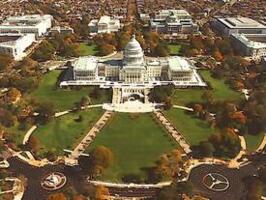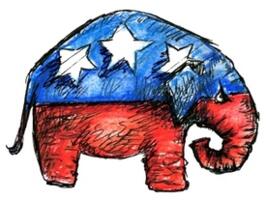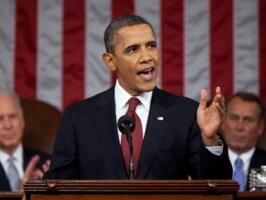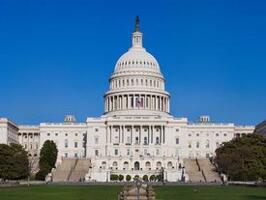Sequester Puts Elected Washington on Trial
A Commentary By Scott Rasmussen
There's a panic bubbling to the surface in Washington, D.C.
It's being brought about by the so-called sequester, scheduled to take effect next Friday, March 1. The sequester, a series of automatic across-the-board spending reductions, is a gimmick the politicians came up with in 2011 to force themselves to reach some kind of long-term deficit reduction deal.
The expectation was that voters would rise up and protest the automatic spending cuts with such vehemence that it would force Republicans and Democrats to work together. But it hasn't happened. In fact, just 36 percent of voters want Congress and the president to stop the automatic cuts.
As a result, the White House and many media organizations have been trying to raise the alarm. President Obama himself used his State of the Union address to say, "These sudden, harsh, arbitrary cuts would jeopardize our military readiness." To make sure voters understood his concern, he added, "They'd devastate priorities like education, energy and medical research. They would certainly slow our recovery and cost us hundreds of thousands of jobs."
The Washington media has followed up with countless stories about the pain that ordinary Americans will feel if these cuts are not stopped.
Still, the voters haven't come around. The president proposed replacing the across-the-board spending cuts with a combination of tax hikes and specific spending cuts. Only 39 percent favor that proposal. Forty-two percent oppose it and prefer the automatic spending cuts, instead.
This is not to suggest that the automatic spending cuts are popular. They're not. When the sequester gimmick was first proposed, just 29 percent thought it would be a good idea to have such arbitrary cuts implemented. But after watching the nation's elected politicians perform for the last year and a half, while voters still see the automatic cuts as bad policy, they see them as less bad than the other options.
Voters, with good reason, have grown skeptical of Washington's commitment to cutting government spending. The last time spending went down from one year to the next was 1954. Voters are now catching on. Only 17 percent believe the March 1 cuts will really reduce government spending. Fifty-eight percent correctly recognize that they will merely reduce the growth of spending.
So while the president and members of Congress talk about harsh and devastating budget cuts, most voters recognize that spending is not really being cut at all.
As for the reports spilling out of the nation's capital about the harm that the automatic cuts will do to the economy, they're unlikely to resonate with most voters. After all, 68 percent believe that cutting government spending is the best thing the government could do to help the economy.
If the economy stalls, you can bet that many politicians will blame the automatic spending cuts -- but just as many will blame the president's health care law. There's little evidence voters will believe the spending cuts are to blame.
Instead, voters are likely to see the sequester as a failure for official Washington. It will be further proof that their elected officials are incapable of doing their jobs. So incapable, in fact, that automatic, arbitrary and thoughtless budget-cutting is a better option than anything Congress and the president could come up with.
But the real reason for the panic in Washington is that the American people ultimately may applaud the spending cuts. That might mark the beginning of the end for politics as usual.
To find out more about Scott Rasmussen, and read features by other Creators Syndicate writers and cartoonists, visit www.creators.com.
COPYRIGHT 2013 SCOTT RASMUSSEN
DISTRIBUTED BY CREATORS.COM
See Other Political Commentaries.
See Other Commentaries by Scott Rasmussen
Rasmussen Reports is a media company specializing in the collection, publication and distribution of public opinion information.
We conduct public opinion polls on a variety of topics to inform our audience on events in the news and other topics of interest. To ensure editorial control and independence, we pay for the polls ourselves and generate revenue through the sale of subscriptions, sponsorships, and advertising. Nightly polling on politics, business and lifestyle topics provides the content to update the Rasmussen Reports web site many times each day. If it's in the news, it's in our polls. Additionally, the data drives a daily update newsletter and various media outlets across the country.
Some information, including the Rasmussen Reports daily Presidential Tracking Poll and commentaries are available for free to the general public. Subscriptions are available for $4.95 a month or 34.95 a year that provide subscribers with exclusive access to more than 20 stories per week on upcoming elections, consumer confidence, and issues that affect us all. For those who are really into the numbers, Platinum Members can review demographic crosstabs and a full history of our data.
To learn more about our methodology, click here.






